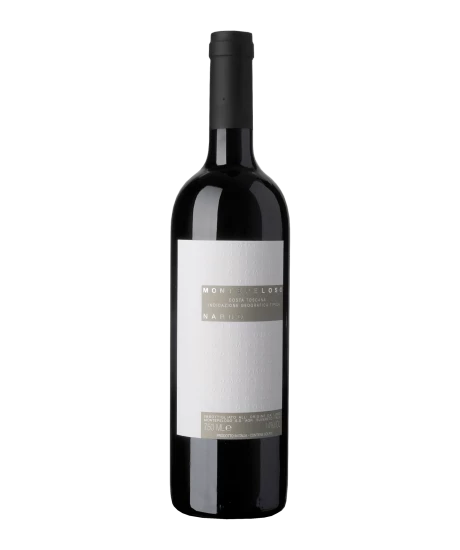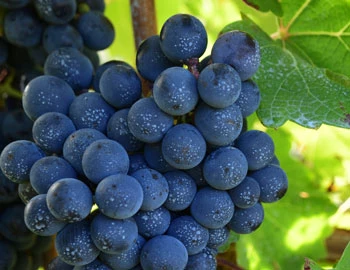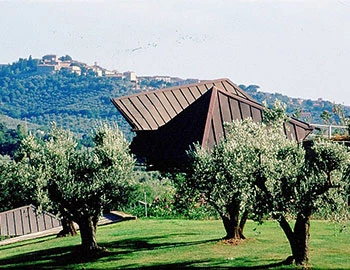
Nardo 2021
IGT Costa Toscana, Montepeloso, 750 ml

| Grape variety: | Sangiovese, Malvasia Nera, Cabernet Sauvignon |
| Producer: | Montepeloso |
| Origin: | Italy / Toscana |
Description
The Maremma at its best! Nardo epitomises the strictly limited selection of the oldest and best vineyards of local grape varieties such as Sangiovese and Malvasia Nera as well as some Cabernet Sauvignon, depending on the vintage. The uncompromising concentration on the best grapes of the respective year produces a dense, complex and multi-layered Tuscan. The bouquet is characterised by ripe dark fruit and spicy, Mediterranean notes. On the palate, it is powerful yet supple and elegant, with rich and velvety tannins. Great ageing potential!
Attributes
| Origin: | Italy / Toscana |
| Grape variety: | Sangiovese, Malvasia Nera, Cabernet Sauvignon |
| Ripening potential: | 3 to 15 years |
| Drinking temperature: | 16 to 18 °C |
| Food Pairing: | Bistecca fiorentina, T-Bone steak, Beef Stroganoff, Roast veal with morel sauce, Saddle of lamb fillet with herb jus, Fegato alla veneziana, Tagliatelle al tartufo |
| Vinification: | fermentation in wooden barrel |
| Harvest: | hand-picking, in small boxes |
| Maturation: | in tonneau, in steel tank |
| Bottling: | filtration |
| Maturation duration: | 10 months |
| Volume: | 14.0 % |
| Note: | Contains sulphites |
Sangiovese
Epitome of Tuscany
Chianti classico, Brunello di Montalcino, Vino nobile di Montepulciano: the Sangiovese is in each of the classic red wines from Tuscany. For a long time, it was assumed that its birthplace was here. After all, it appeared under various synonyms in Tuscan documents dating from 1600. But in 2004, researchers unveiled that one of its parents originated in Calabria in southern Italy. Today, it is the most planted variety in Italy. In addition to Tuscany, it fares well in Emilia-Romagna, Marche or Umbria. It is an exceptionally lovable wine: its aromas of cherry and plum, violets and spices are complemented by fresh acidity and a juicy texture. It wins people around both as cheerful, drinkable wines with pizza and pasta and as barrel-aged top class wines. Carried by Italian immigrants, it found its way to California and Argentina. However, it does not have the same reputation there.

Cabernet Sauvignon
The backbone of Bordeaux
The Cabernet Sauvignon gives the Bordeaux its backbone, yielding deep violet wines with powerful tannins and endless ripening potential. It is the top dog in Médoc, and is placed in all five premier crus of Bordelais. When young, it often appears strict and unapproachable, but with advancing years, its tannins round off. It is wonderfully velvety, and yet always maintains its freshness. Typical flavours include cassis, graphite and cedar. Wherever Cabernet Sauvignon is found, Merlot is not far away. It complements the robust structure of Cabernet with softness, fruit and richness. The Cabernet Sauvignon is the most-exported vine in the world. It delivers persuasive qualities in Italy as an ingredient of the Super Tuscan, or as the flagship variety from California. There, it is lovingly titled “Cab Sauv”. Meat fans should be aware that it fantastically accompanies a grilled entrecôte. The family tree of Cabernet Sauvignon is surprising: its parents are Cabernet Franc and the white Sauvignon blanc.

Italy
Italy – Where wine is a way of life
The Italian wine regions are extremely diverse, and this is made clear in their wines. Established varieties such as Merlot, Syrah, and Sauvignon can be found on just 15 percent of the total vine growing area. The remaining 85 percent is reserved for autochthonous, indigenous varieties. More than 2,000 different grape varieties are grown under diverse conditions and pressed with various techniques into wines that reach the top tier of the international wine market.


